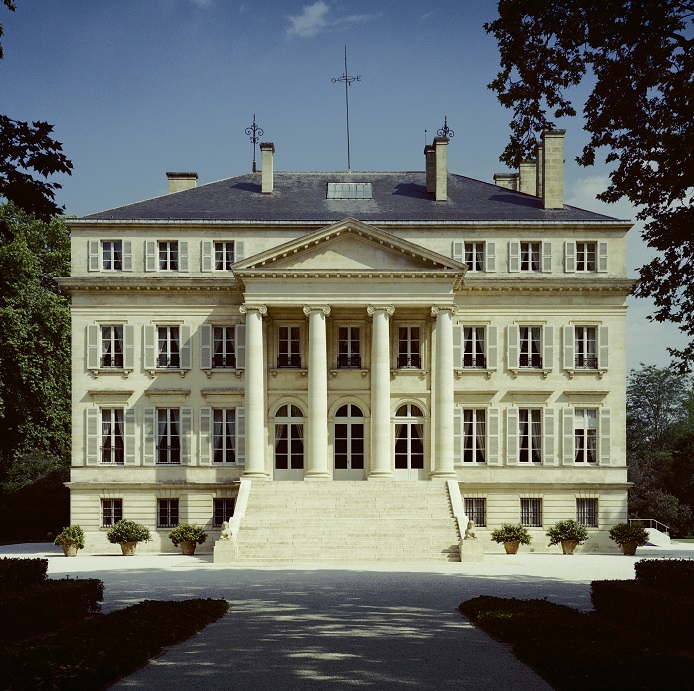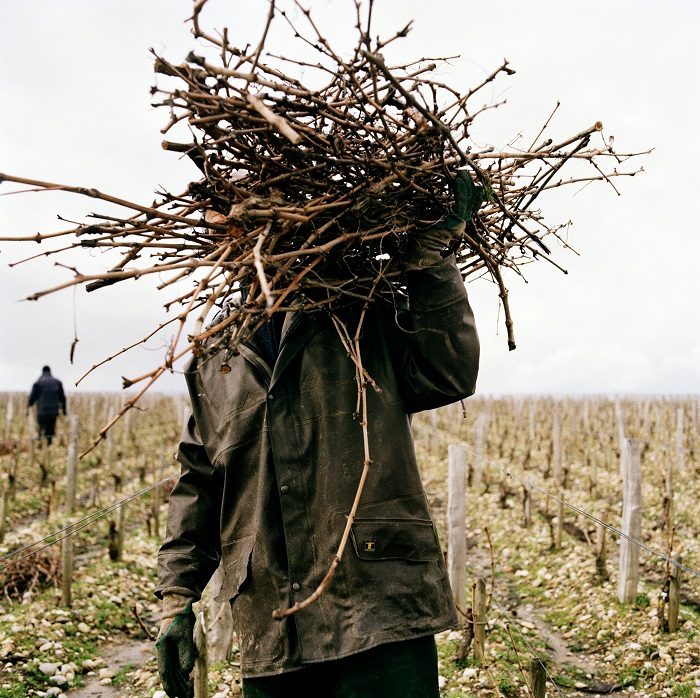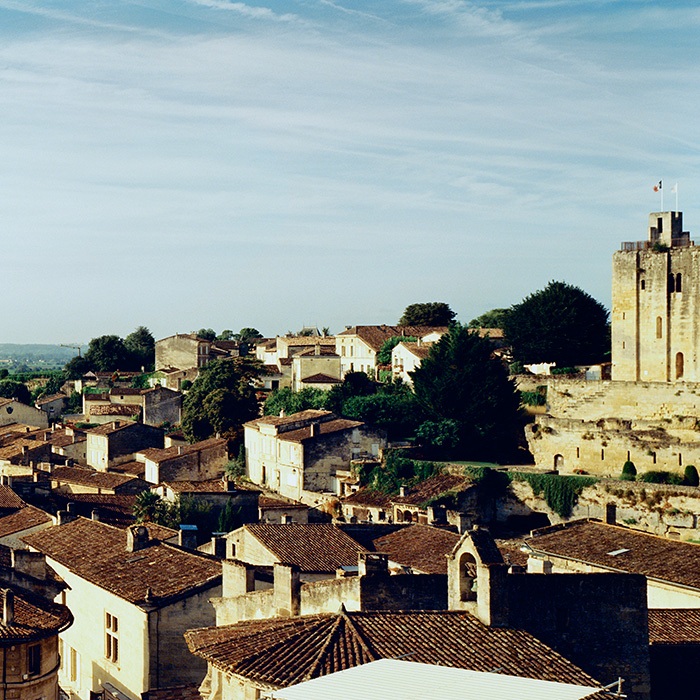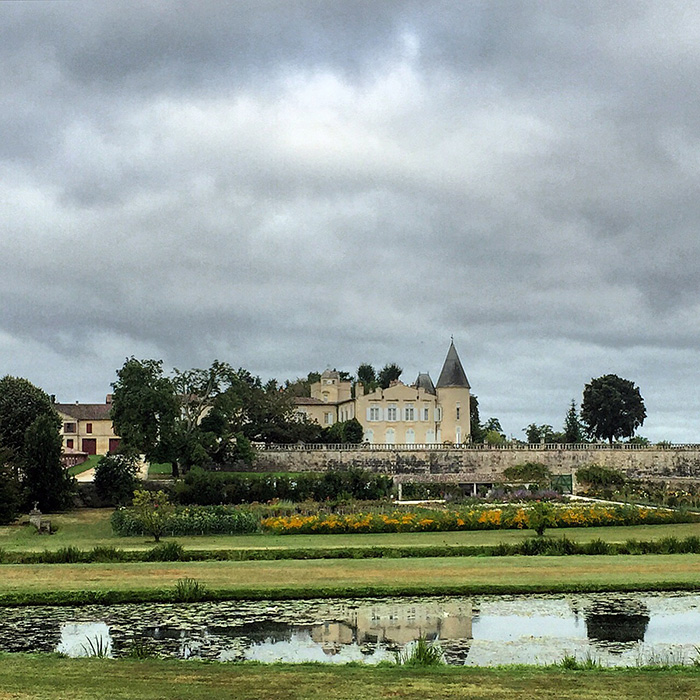A history of “en primeur”: fable and fortune
Author: Mark Pardoe MW

Ch. Margaux. Photograph: Jason Lowe
The first Bordeaux vintage I bought en primeur as a wine merchant was 1982. I only bought two wines – 25 cases each of Chx Batailley and Haut-Batailley – and I only did so because a Bordeaux négociant whom I didn’t know that well strongly suggested that I should. But, if I’m honest, I didn’t really understand the process at the time. I just knew the wines were very good.
That my first en primeur purchase was 1982 provides an interesting marker. This is the vintage when the whole process came into broader understanding and acceptance, powered by an alignment of an exceptional vintage, burgeoning growth in the western economies and the creation of a new way of explaining wine, with the arrival of Robert Parker, The Wine Advocate and his 100-point scoring system.
Origin and evolution
En primeur existed before 1982, of course, but only as a function of market conditions. Years of high demand were usually made available to the Bordeaux trade at advantageous prices as a way of generating cash flow for the châteaux. The trade, in turn, would seek to gain a position at the earliest opportunity, even to the extent of committing to the eventual wine before it had been made and was merely grapes on the vine, “sur souche”. Such trading was not uncommon during the early 1970s – that is until the Bordeaux crash of 1973, triggered by the oil and energy crisis of that year.
Before the 1982 campaign, very little Bordeaux was bought en primeur by private clients. But the economic timing of the vintage, its combination of quality and quantity, the strength of the dollar and wine’s democratisation by Robert Parker began a new chapter. Parker’s 100-point system cut straight to the message and it was one that everyone could understand: the higher the score, the better the wine and the more desirable it became. No longer was there any need to understand context (although Parker did offer his stylised notes on most wines if more information was required). For the new Asian markets – increasingly affluent, interested in the prestige which wine could bring and without English as a first language – the 100-point system was the key to knowing what to buy.

A vineyard-worker at Ch. Ducru-Beaucaillou carries a bundle of vine-cuttings post-pruning in March. Photograph: Jason Lowe
With this catalyst and a succession of good or great vintages in the 1980s, regular demand combined with rising prices and created big profits for the best châteaux. The 1970s had been hard; after the 1973 crash, only 1975 and 1978 produced anything approaching interesting quality. Many great names had been struggling and some properties changed hands quite cheaply, but the 1980s changed all that.
By the 1990s, the châteaux were strong enough to withstand the problems of 1991, 1992, 1993 and, to an extent, 1994 – a succession of challenging vintages which could have been terminal in the 1970s. The brutal late frosts in 1991 killed 50 percent of the crop although, famously, Ch. Pétrus saved 70 percent of its crop by employing a helicopter to hover over the vineyard, thus dispersing the freezing air; but even that luxury was only appropriate for a small vineyard like Pétrus. The investments which had been made, especially in the cellars, allowed much better wine to be made, even if there was much less of it in years where a lot of fruit had to be discarded or downgraded. Alfred Tesseron says that 1994 is the vintage in which Ch. Pontet-Canet turned the corner, after years of investment and commitment. Indeed, it could be argued that those four vintages changed a lot of perspectives in Bordeaux and that the model we know now emerged from that time. The introduction of second and even third wines bolstered this process. It led to a consistency of quality and a growing confidence in each château’s reputation. Success in 1995, 1996 and especially 2000 left Bordeaux on the crest of a wave, supported by escalating prices, and they consolidated their position.
Through the 2000s, the big guns were starting to see themselves as global luxury brands, and today some châteaux find themselves in the same portfolio as designer handbags. No expense was spared to maximise the quality of the wine, to the extent now that almost every grape is individually counselled. In 2001 I was running my own business and found that I was offering First Growths from 2000 at £2,000 per dozen. This was uncharted territory, yet the wines sold, even if I was uncertain. Yet when Ch. Latour released the last of its 2000 stock in April last year, it sold readily at £8,000. Proof, if it were needed, that buying en primeur is a long game.
This grip on the eventual wine’s quality allows prices to be maintained at a high level and today hardly any indifferent wine is produced. In difficult years, production is naturally low through both nature’s and the château’s intervention. In bountiful years, production of the top wines is limited by selection of just the best fruit, with the rest reclassified. Only in great years do we sometimes find quality and quantity. Great years and small volumes drive up prices and older vintages realign their prices. The financial strength of the most famous châteaux allows them to manage supply to the market, having the luxury of only releasing what is strategically necessary.

Looking south over the rooftops of picturesque St Emilion. Photograph: Jason Lowe
Looking ahead
With three decades of success under their belts, is there now any purpose to the top châteaux continuing to participate in the annual en primeur bun fight? Indeed, is there still any residual connection to its original purpose: to offer wine at advantageous prices in return for an early commitment and payment?
The first question is easily answered. The value of a time when the eyes of the world’s wine-lovers are all on Bordeaux, in a way that no other wine category can manage, is without price. And Bordeaux’s sheer size, its organisation and resources, including the city itself, are capable of accommodating the huge numbers which arrive in the spring after each vintage, a murmuration of merchants, journalists and buyers for vintages with an early high reputation.
There has been the occasional tremor, such as when, in 2012, Ch. Latour announced that it was withdrawing from the en primeur process, to cellar its wines itself until it felt they were ready for release. But no one else of that scale has yet followed suit, although most big names now release less wine for the en primeur campaigns than hitherto.
The second question is more complex. If you buy en primeur, you are now either a collector or an investor. The price of the First Growths is now beyond the pocket of the average drinker. But, whichever hat you are wearing, you will want to know that, by buying early, you will not lose out.
In truth, some colds were caught in the heady days of the 1990s. The 1997 vintage was hugely overpriced on release, in relation to its quality and the amount of wine made. If you were looking to turn a profit in five years you would have lost out, but the anomaly of wine as a commodity is that each vintage is a finite and diminishing asset, with less available as bottles are opened by drinkers, to the advantage of the investors. Only a decade after the 1997 en primeur campaign, so little was still on the market that the price was, in most cases, sufficiently above its original opening price.
The power that the strongest brands now have over managing their supply to market, and positioning prices, means that every time we have a spike in demand for a collectible vintage, the prices for the earlier years still on the market realign behind it. So the investor will win, eventually, but on an unpredictable cycle. The drinker will win by the time the wine is mature.

Ch. Lafite Rothschild. Photograph: Jason Lowe
Chx Lafite, Margaux, Latour, Pétrus, Cheval Blanc et al are now true international brands, and all have teams dedicated to re-enforcing that position. The parochial purposes of en primeur back in the 1980s don’t exist anymore. The heady days of money-making in the 1990s, and even as late as the 2010 vintage, are probably gone, but I don’t think that’s why the en primeur process still grabs the imagination.
Great vintages usually come along two or three times a decade and surprisingly often in pairs (1989/90, 1995/96, 2009/10 and, dare I say it, 2015/16). The years in between can be a little fallow although the comet tail of interest after a great campaign usually sustains the next vintage; but when a great year arrives, new converts and seasoned players all come to the game. Bordeaux en primeur in a great vintage is irresistible.
Yet the identification of the great years is an imprecise science. The wines are first prepared for tasting in the spring following the vintage. At this stage the wines are very raw and special assemblages have to be made to give a best impression of how the finished wines will taste. For some, this means that they will not show at their best. For a number of years I had the benefit of visiting Bordeaux each June, after the hullabaloo of the en primeur tastings had finished. Even after an extra couple of months, the wines always showed more flesh and integration. I mentioned this once to Charles Chevallier, the doyen of Ch. Lafite, itself a wine that to me always seemed a bit muted at en primeur time. Charles raised his bushy eyebrows half-way up his forehead. His view was that it is impossible to judge a wine accurately so soon after vintage, yet commentators are applying definitive judgements. He was frustrated but played the game because he had to. If I was to recommend a change, it would be to postpone the formal release tastings until after the second winter. Burgundy can manage it, after all.
As I write this, Emmanuel Macron is an aspiring candidate to be the next President of France. By the time you read this, he may have achieved his goal. Along the way, and appropriately for a philosophy graduate, he has already shown commendable perspective on the politics of today, which he calls an amalgam of style and mysticism. I rather like that, and I think it applies to Bordeaux en primeur as well.
Style? Without doubt. Mysticism? Why not? Why else would people regularly spend thousands of pounds for cases of fermented grape juice? Wine and its associations must speak to something deeper. Bordeaux en primeur isn’t going away; it perpetuates and fulfils both a need and a dream. But its leaders will continue to get smarter at playing the game, and the game is making money. Bordeaux en primeur now runs more for the benefit of the big players and yet, when the next great vintage comes along, the buyers will be queueing up.
1982: My first proper introduction to Bordeaux and the region’s transitional vintage. There was a superb summer and the vintage is now a little rustic compared to more recent years, but has a place in my heart.
1985: First commentaries questioned its longevity because of its accessibility, but in the end these lasted well and never failed to charm, and some are still doing so.
1995: Immediately delicious after the paucities of 1991 to 1994. It was very fine on the Right Bank and Graves, with many rewarding wines in the Médoc.
1998: Another fine Right Bank year, but the Left Bank was underestimated at en primeur. Seemingly pinched wines became more architectural with time, if unfashionably fresh.
2000: Overhyped as a great year, which it mostly isn’t, but every bottle is a sunny treat.
2004: A slowly unfurling vintage. Never lush, but a cerebral year, multi-faceted in a retro way (which means cool fruit, buttressed by evident tannin and acidity).
2005: Normally I favour the underdogs, but this year’s remarkable tension between ripeness and freshness makes it unique. A once-in-a-lifetime vintage.
2008: Echoes of 1998 and 2004 here. Never a showy vintage but it has grace and complexity. It might have been a failure 25 years earlier, showing how far Bordeaux has come.
2010: Like 2005 but with knobs on: denser and more powerful but still dexterous. A twice-in-a-lifetime vintage.
2012: A funny little runty vintage, unloved at en primeur, but compact and precise, especially where the producer was prepared to make sacrifices. Many pleasant surprises.
Browse our range of Bordeaux on bbr.com, including the 2016 vintage en primeur.


